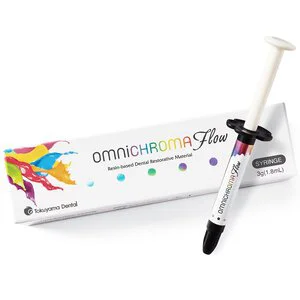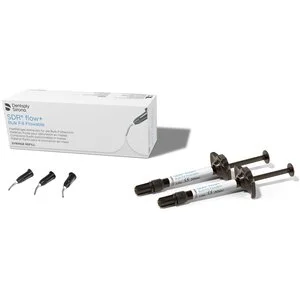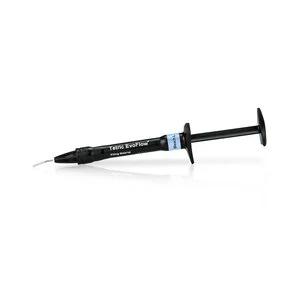Filter Products
Filter Products
Flowable Composites
As low as
$61.46As low as
$103.27As low as
$82.49As low as
$262.49As low as
$87.94What are flowable dental composites?
Flowable dental composites are advanced restorative materials used to fill cavities and restore teeth. They are characterized by their low viscosity, allowing for easy placement in hard-to-reach areas. These composites combine resin and filler particles, offering excellent adaptability and a natural-looking finish.
How do flowable composites differ from universal composites?
Flowable composites have a lower viscosity when compared to universal composites, making them ideal for applications requiring better flow and adaptation. While universal composites are suitable for larger restorations, flowable composites excel in small cavities and areas with challenging access.
What are the key advantages of using flowable dental composites?
- Enhanced adaptability for better marginal sealing. Flowable dental composites exhibit a remarkable ability to adapt to the tooth's contours, ensuring superior marginal sealing. The enhanced adaptability minimizes the risk of microleakage, contributing to the longevity and success of the restoration.
- Time-efficient application in hard-to-reach areas. The low viscosity of flowable composites facilitates easy placement in challenging, difficult-to-reach regions of the oral cavity. Achieving optimal results in less time, dental professionals enhance overall workflow efficiency without compromising restoration quality, which is particularly advantageous during procedures where precision and speed are paramount.
- Reduced shrinkage stress for improved patient comfort. With their lower shrinkage stress compared to traditional composites, flowable composites minimize the potential for post-operative sensitivity and discomfort in patients during polymerization. By incorporating flowable composites into restorative procedures, dental professionals contribute to a more comfortable and positive patient experience, enhancing overall satisfaction with the treatment.
Can flowable composites be used in conjunction with other restorative materials?
Dental professionals can seamlessly integrate flowable composites with various restorative materials, including universal composites and glass ionomers, offering a versatile approach to treatment planning. This adaptability allows for a tailored and comprehensive approach to address diverse clinical scenarios, ensuring optimal outcomes in restorative dentistry. By strategically combining these materials, practitioners can leverage the unique properties of each to achieve the best results for their patient's specific needs.
How can dental professionals ensure optimal curing of flowable composites?
- Use a high-quality light-curing unit with sufficient power. Employing a curing light with adequate power ensures thorough and effective polymerization of flowable composites, contributing to the restoration's durability and longevity.
- Apply the composite in thin layers to facilitate complete curing. Thin layer application promotes complete curing, minimizing the risk of incomplete polymerization. This technique enhances the physical properties of the composite and reduces the likelihood of post-operative issues.
- Follow the manufacturer's recommended curing times and techniques. Following the manufacturer's guidelines regarding curing times and methods is essential to attain the best results in dental procedures. Ensuring the flowable composite undergoes the necessary curing process will lead to a reliable and successful restoration.
























